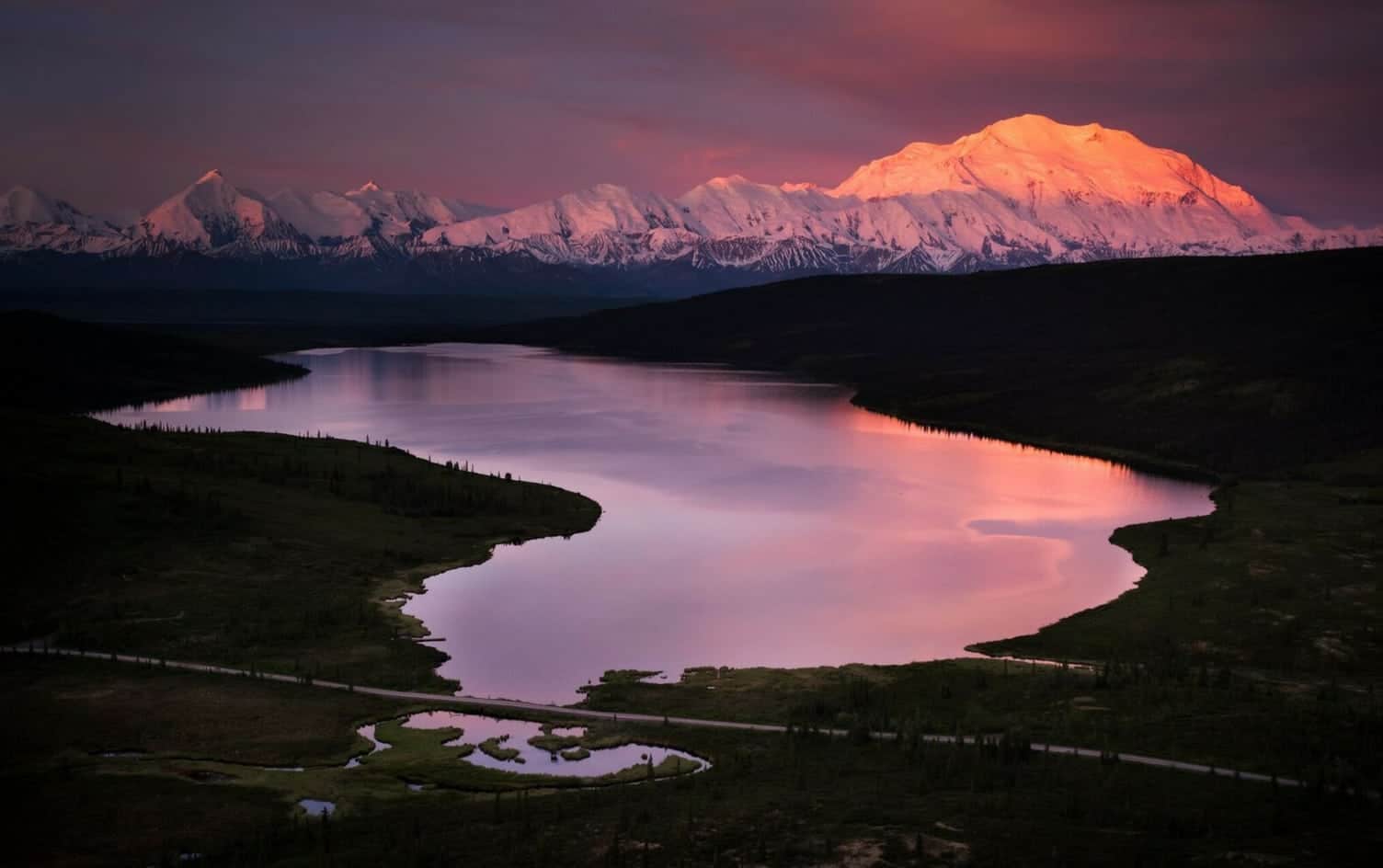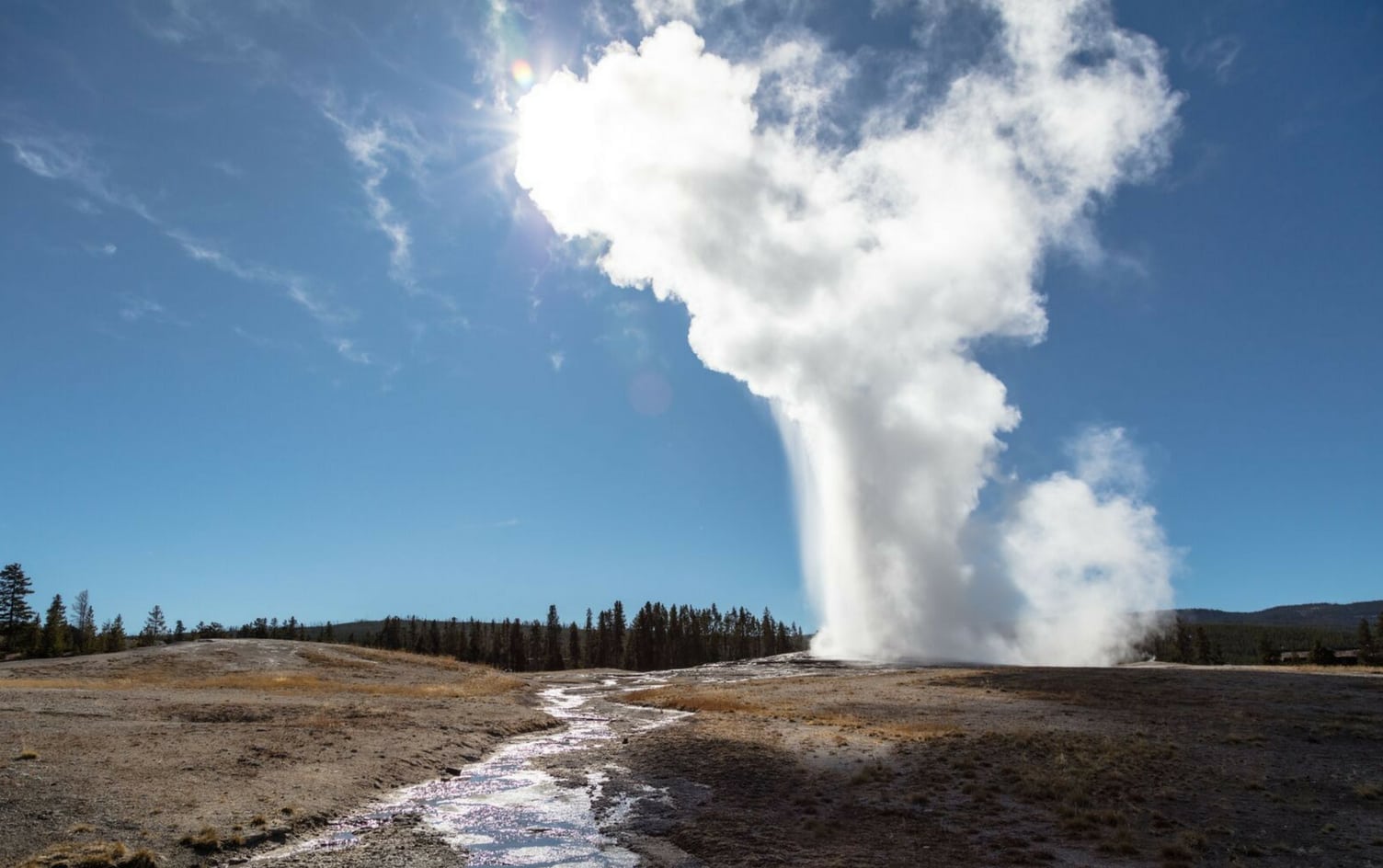If you’re like most people, your travel bucket list probably includes snapping selfies at iconic landmarks like the Statue of Liberty, Golden Gate Bridge and Lincoln Memorial. While these man-made wonders are certainly worth a visit, some of the most impressive natural landmarks are found in U.S. national parks.
When you start planning your next trip, add these eight awe-inspiring natural wonders to your list of must-see landmarks.
GENERAL SHERMAN TREE
Sequoia and Kings Canyon National Parks, California

California is known for its giant sequoias, and the General Sherman Tree is the king of the forest. Measuring 275 feet tall and with trunk circumference of more than 100 feet, it’s the world’s largest tree. You can take in the massive specimen at the Sequoia and Kings Canyon National Parks in Three Rivers, California.
Follow the paved Main Trail a 1/2-mile to the General Sherman Tree. The tree is one of a number of towering trees in the Giant Forest sequoia grove. Venture further into the Grant Cove area of the park to see the General Grant Tree, which measures 267.4 feet and has a base of 107.6 feet at its perimeter, making it the second largest tree in the world.
DEVILS TOWER
Devils Tower National Monument, Wyoming

Renowned for their isolation, the Black Hills boast more than one million acres of unspoiled landscapes and Devils Tower National Monument is the most iconic landmark in the region. The massive monolith spans 867 feet from base to summit, stretching toward the horizon for all to see.
The 1.3-mile Tower Trail spans the base of the national monument. You can follow the trail to explore the 50 million-year-old rock formation from all sides. Look for strips of cloth tied to the trees along the route; these Native American prayer cloths represent the spiritual connections local tribes have to the Tower.
Devils Tower is also a premier rock climbing destination with difficulty ratings from 5.7 to 5.13. Grab your gear and head for the summit; it’s the perfect spot to take in the views of the surrounding landscape.
DENALI
Denali National Park, Alaska

With a summit elevation of 20,310 feet, Denali is the highest peak in North America. Glaciers and tundra dominate the vast landscape and wildlife abounds. It’s common for visitors to see caribou, grizzly bears and moose throughout Denali National Park and Preserve.
While expeditions to summit Denali are popular with experienced hikers, the peak can also be viewed from several hiking trails within the park. The Eielson Alpine Trail is a steep hike that ascends 1,000 feet on a 2-mile out-and-back trail and offers amazing views of the mountain. The Eielson Stroll is a less intense 1/2-mile gravel trail that traverses high alpine tundra; ranger-led walks leave from the nearby visitor center and include a history of the towering landmark.
LANDSCAPE ARCH
Arches National Park, Utah

More than 2,000 natural rock arches have been documented in the 76,679 acres that make up Arches National Park and Landscape Arch is the most iconic. The arch spans 306 feet, making it the largest stone span in the world.
Landscape Arch, hailed as one of the “must-see” landmarks in the Utah national park, is also its most precarious thanks to concerns about the slender arch collapsing. The best way to see the spectacular arch is to hike the Landscape Arch Trail. The 1.6-mile trail leads straight to the arch and features several smaller arches along the route. Although the trail to the arch is easy, it becomes more difficult on the other side. You’ll need to traverse narrow ledges and scramble over rocks to hike the entire trail.
HAVASU FALLS
Grand Canyon National Park, Arizona

Waterfalls are a rare sight in the desert southwest, making Havasu Falls extra special. The falls are on the Havasupai Indian Reservation, which is part of Grand Canyon National Park.
Havasupai means “people of the blue-green waters,” and the pools below Havasu Falls live up to their name. The main falls crash over a 100-foot cliff into stunning turquoise waters below, which get their color from the calcium carbonate in the water. When desert temperatures spike, the plunge pool is a perfect spot for a swim.
Reaching the landmark waterfall requires trekking 8 miles from Hualapai Hilltop to Supai Village. Permits are required and no day hiking is allowed. Bring a camera: The red rock formations and turquoise waters are the perfect backdrop for photos.
CRATER LAKE
Crater Lake National Park, Oregon

With depths reaching 1,943 feet, Crater Lake is the deepest lake in the nation and, in our opinion, it’s also one of the prettiest. The peaks of the Cascade Mountains surround the spectacular blue waters, creating a scene straight from a postcard.
Crater Lake was created more than 7,000 years ago when an eruption caused the tall peak to collapse and form the lake. Now, the pristine lake — believed to be the cleanest and clearest large lake in the world — is a popular Oregon landmark.
Thanks to its location, Crater Lake National Park can receive up to 44 feet of snow in the winter so the park is best explored between April and October. Drive around the rim to take in the views of the lake below, hike one of the trails or get into the water. Swimming is allowed at Cleetwood Cove and Wizard Island.
HIGH DUNE
Great Sand Dunes National Park and Preserve, Colorado

The sand dunes in the 150,000-acre national park are considered among the most fragile and complex dune systems in the world. Congress declared the dunes a wilderness area in 1976 to protect the dunefield, which covers 30 square miles and contains the tallest dunes in North America.
The High Dune stands out against the vast expanses of sand, rising 699 feet from the base to the peak. Exploring the landmark dunes is the best way to experience Great Sand Dunes National Park and Preserve.
Hiking one mile from the base of the High Dune to the first ridge takes about an hour because the ever-shifting “trail” to the top requires following the ridge lines in a zigzag patterns. For an adrenaline rush, try sandboarding or sand sledding (rentals are available) and careen down the dunes.
OLD FAITHFUL
Yellowstone National Park, Wyoming

No list of national park landmarks is complete without Old Faithful. Located in Yellowstone National Park, the geyser was discovered in 1870 and named for its frequent and predictable eruptions. Upwards of 3,700 gallons of water shoot from the geyser an average of every 60–110 minutes; eruptions reach an average height of 130 feet and steam temperatures can be as high as 350°F.
Yellowstone had more than four million visitors last year, according to the National Park Service, and Old Faithful is the most popular site in the park so geyser viewings can get crowded. Go early in the morning or after 6 p.m. to avoid gridlock at the geyser viewing area. Winter is also a great time to watch the iconic geyser erupt minus the crowds.




